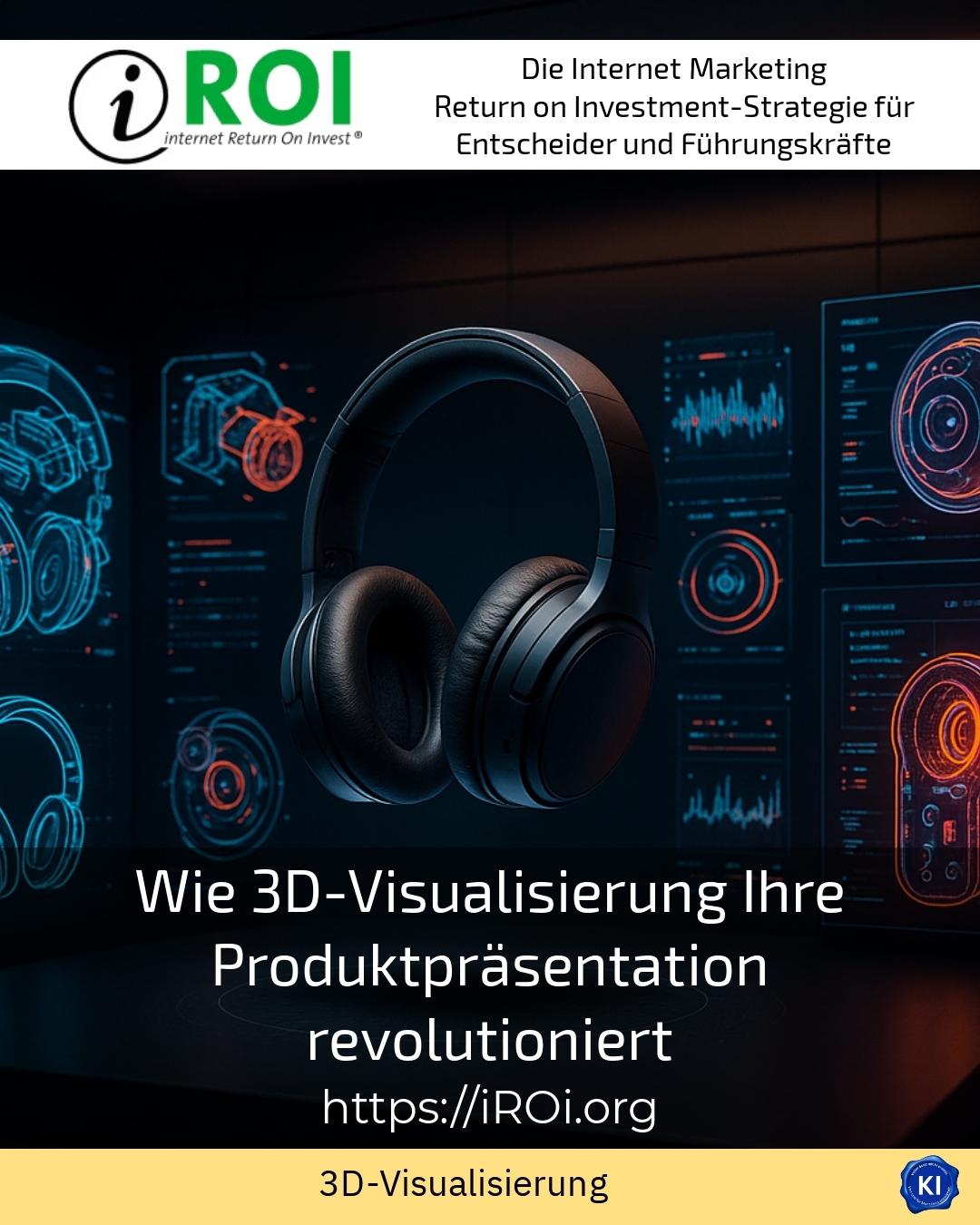3D visualisation opens up a wide range of opportunities for companies to present their products in an innovative way. By using this technology, products can be visualised realistically, in great detail and flexibly. This supports both marketing and sales processes, as potential customers receive a more intensive and emotional product experience and can inform themselves better.
The flexibility of 3D visualisation in product presentation
A major advantage of 3D visualisation is the high degree of customisability of the presentations. Companies can create different product variants digitally and thus show different designs, colours or materials in a convincing way. Furniture manufacturers benefit from this, for example, as they can present different types of fabric or surfaces in virtual rooms without having to produce them physically. Similarly, 3D technology in the automotive industry enables the virtual configuration of numerous vehicle models. Customers can thus pursue their individual ideas and test the product digitally.
Technical devices can also be effectively staged using 3D visualisation by visualising different material options or features with a click. This creates a multitude of possibilities with which prospective customers can better visualise the product.
BEST PRACTICE with one customer (name hidden due to NDA contract) The company used 3D visualisation to develop product-related variants digitally and coordinate them directly with end customers. This significantly reduced the cost of physical prototypes. At the same time, customer satisfaction increased thanks to active involvement in the development process.
Cost efficiency and time savings through digital product presentation
3D visualisation saves time and money because physical models or time-consuming photo shoots often become superfluous. Companies can adapt virtual prototypes with just a few clicks, check and optimise designs without having to make expensive changes on site. In the fashion industry, this process is ideal for visualising digital designs of clothing or accessories before production. This helps to reduce production errors and act more sustainably.
In mechanical engineering, 3D visualisation also supports development cycles, as complex devices can be simulated and improved at an early stage. This allows problems to be recognised and eliminated at an early stage before expensive production steps are necessary. This leads to shorter time-to-market and optimised production processes.
BEST PRACTICE with one customer (name hidden due to NDA contract) A medium-sized company was able to reduce the development time of new machines by around 30 % using 3D visualisation and virtual prototypes. This made it possible to recognise and rectify potential errors in the model in advance, which significantly reduced production costs.
Interactive 3D visualisation as an emotional sales tool
In addition to pure presentation, interactive elements are playing an increasingly important role. Customer-engaging configurators allow products to be rotated, enlarged or explored in different variants in real time. This creates a more intensive product experience, which often facilitates and accelerates the purchase decision. In the furniture industry, buyers can virtually place their favourite furniture in a digital space and try out different combinations.
Animations can also be used to explain the functionalities of technical products such as robots or machines in an understandable way. This creates a convincing communication bridge between manufacturers and users.
BEST PRACTICE with one customer (name hidden due to NDA contract) A manufacturer of automated warehouses used interactive 3D visualisation to show how the individual system components interact with each other. Customers were able to operate, configure and understand processes live, which increased the acceptance of the offer.
3D visualisation: a clear competitive advantage
Companies that rely on 3D visualisation stand out from the competition. The realistic and flexible visualisation creates trust among potential customers and makes it possible to experience products even before they are physically manufactured. The use of augmented reality (AR) or virtual reality (VR) also opens up innovative sales channels, such as virtual trade fairs or interactive showrooms.
At the same time, the effort and costs for traditional marketing measures are reduced. Investing in this technology can therefore quickly pay off for many companies because it increases customer satisfaction and conversion rates.
My analysis
3D visualisation is revolutionising product presentation with its wide range of possibilities: Flexibility in visualisation, interactive experiences and significant time and cost savings. Companies can thus present their products in a more comprehensible, emotional and efficient way, which leads to a better customer experience and increased sales success. iROI-Coaching also supports the implementation of 3D visualisation projects in order to achieve tailor-made solutions and optimum results.
Further links from the text above:
3D product visualisation - examples, costs & advantages
30 great 3D product presentation & visualisation videos
How 3D visualisation revolutionises your product presentation
3D product visualisation: The complete guide for companies
Why 3D visualisation is a must for product
For more information and if you have any questions, please contact Contact us or read more blog posts on the topic internet Return on Investment - Marketing here.
















